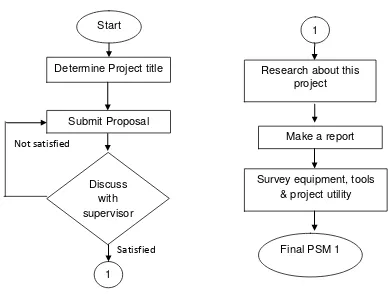ONLINE FINAL YEAR PROJECT TITLE BOOKING SYSTEM
KAMANESWARY A/P MUNUSAMY (B021010143)
This Report Is Submitted In Partial Fulfillment of Requirements for the Bachelor Degree of Electronic Engineering (Computer Engineering) With
Honours
FAKULTI KEJURUTERAAN ELEKTRONIK DAN KEJURUTERAAN KOMPUTER
UNIVERSITI TEKNIKAL MALAYSIA MELAKA
ABSTRACT
This project is very useful system for the Faculty of Electronics and Computer Engineering (FKEKK), UTeM. The project title is Online Final Year Project Title Booking System. The system was developed to guide the faculty lectures and students. This system manage is the systematic application that make the registration of final year project using online. Users easy to manage and save more time by wasting time finding each lectures who available and confirm the FYP title. The methods that use in developing this system by using PHP programming language. This system also helps to improve final year project registration compared to the traditional methods and minimize the usage of paper.
ACKNOWLEDGEMENT
Thankful to God, because I can finish my PSM this semester with success. A million thanks to special supervisor is Mr. Hamzah Asyrani Bin Sulaiman from University of Technical Malaysia, Malacca because I have received for advice and support.
Not forgotten thanks to my family for providing everything, such as money, to buy anything that was related to PSM. They also supported me and encouraged me to complete my PSM project.
Then I would like to thank all my friends, for guiding me. During PSM, a lot of knowledge and technical skill that I have learned. Without their guidance and information, I do not think I will gain knowledge and manage to do work that have been assigned to.
Finally, a speech to thank the University of Technical Malaysia, Malacca and to all who are involved directly or indirectly.
TABLE OF CONTENTS
CHAPTER TITLE PAGE
ABSTRACT i
ACKNOWLEDGEMENT ii
TABLE OF CONTENT iii
LIST OF FIGURES LIST OF TABLES
1 INTRODUCTION
1.1 Introduction of Project 1.2 Problem Background 1.3 Project Aim
1.4 Objective Project 1.5 Scope of the Project 1.5.1 User Scope
1.5.2 System Scope 1.6 Significance of the Study
2 LITERATURE REVIEW
2.1 Introduction
2.2 Manual System at FKEKK
2.2.1 List of Final Year Project Title 2.3 Previous Projects
2.3.1 Online Registration System
2.3.2 Student Industrial Internship Web Portal 2.3.3 Carl’s Restaurantant Delivery Online System
3 RESEARCH METHODOLOGY
3.2 Project Implementation 3.3 Process Flowchart 3.4 Project Requirement
3.4.1 Software Requirement
3.4.1.1 Macromedia Dreamweaver 8 3.4.1.2 XAMPP Server
3.4.1.3 PHP Language 3.4.1.4 Star UML 3.5 Gantt Chart
3.6 Project Design Concept
4 RESULT AND DISCUSSION
4.1 System Modules 4.1.1 Login as Admin 4.1.2 Login as Lecture 4.1.3 Login as Student 4.2 Discussion
5 CONCLUSION
LIST OF FIGURES
FIGURES PAGES
Figure 2.1: List of Final Year Project Title 6
Figure 2.2: Manual Form 7
Figure 2.3: Use Case Diagram of Instructor 8
Figure 2.4: Use Case Diagram of Student 9
Figure 2.5: Entity Relationship Diagram 10
Figure 2.6: System Architecture 12
Figure 3.1: Flow Chart for PSM1 15
Figure 3.2: Process of Flowchart 17
Figure 3.3: Use Case Diagram Project 24
Figure 4.1: Login Page 26
Figure 4.2: Admin Home Page 27
Figure 4.3: Manage Lecture 27
Figure 4.4: Register Lectures 28
Figure 4.5: Manage Student 28
Figure 4.6: Register Students 29
Figure 4.7: Manage Announcement 29
Figure 4.8: Add Announcement 30
Figure 4.9: Delete Announcement 30
Figure 4.10: Login Page Lecture 31
Figure 4.11: Lecture Home Page 31
Figure 4.13: Titles List 32
Figures 4.14: Student List 33
Figure 4.15: Student List to Approve 33
Figure 4.16: Announcement List For Lectures 34
Figure 4.17: Student Login Page 34
Figure 4.18: Main Page of Student 35
Figure 4.19: Title Search by Lecture 35
Figure 4.20: Title By Lecture list Pending 36
Figure 4.21: Title Search By lecture list Selected 36
Figure 4.22: Search By Course 37
Figure 4.23: The Title selected by Student 38
Figure 4.24: Student Announcement List 38
Figure 4.25: Flowchart of System 39
Figure 4.26: System Weakness 40
LIST OF TABLES
TABLES PAGES
CHAPTER 1
INTRODUCTION
1.1 Introduction of Project
2 1.2 Problem Background
Currently, the system is working manually. Normally, final year student registers their final year project subject via online before starting fourth year. Then the lecturers need to submit their titles to committee members of final year project management. After the procedure, the committee members will patch the list of titles in FKEKK board to the students. The student needs to choose the title at FKEKK board. After the students choose their project title, then the student needs to meet the lecture to confirm they are project title selection. Then the student needs to walk the lecture room from door to door to know whether the titles are still available or already taken by other students. The manual system is made hard and took a lot of time to lectures and students. The same time, students also pressure with choosing a project title and change title for final year project. It will make them wasting time finding each lecture who available and confirm the title.
1.3 Project Aim
3 1.4 Objective Project
The objective is the final results to be achieved. The main objective is to develop this system to improve follow with new counters.
To design a new online system that's capable of handling final year project registration.
To develop a database server using MYSQL that can communicate with
the online final year registration system to store specific data from both lecturers and students.
To verify and validate the efficiency of the application.
1.5 Scope of Project
This system has two scopes which are user and system.
1.5.1 User Scope
The scope of user is based on the user that will use who is a lecturer and student. The scopes are described below.
a. Administrator
- Have privileges to add, update, and access system modules for lectures and student.
4 b. Lectures
- Have privilege to add a title, to accept student who had selected title and update project title.
- Have privileges to view announcement that post by admin.
c. Student
- Have privileges to view lectures name and titles.
- Have privileges to view announcement that post by admin.
- Responsible to make decisions for their final year project title.
1.5.2 System Scope
The system will automatically unlock the title, when the lecture selects the student the system will unlock the two titles that the student chose before. One student can select three titles before the lectures approve, after the lecture approve, the system will unlock the other two titles to other students.
1.6 Significance of the Study
5 CHAPTER 2
LITERATURE REVIEW
2.1 Introduction
In order to complete this project, a literature review is needed. It has played an important role as the early phase in developing this project. This chapter will discuss the information from the website, and research that has been done. From the research in the internet, the literature review is meant a process and documentation of the current relevant research literature regarding a particular topic or subject of interest. In addition, it also consists the knowledge and how these elements related and combined with each other.
2.2 Manual System at FKEKK
6 2.2.1 List of Final Year Project Title
Before starting 4th year for final year students the lectures should provide their title. Each lecture need provide maximum four project title. The faculty lecture needs to do manual list and paste in faculty PSM main board.
Figure 2.1: List of Final Year Project Title
7 Figure 2.2: Manual Form
8 2.3 Previous Projects
2.3.1 E. Shafie, Al-Ajlan, K. Bajahzar and Y. Al-Saawy Software Technology, “Online Registration System”, Research Laboratory (STRL), 2011. [7]
This paper discussed about the educational process, such as developing good study plans and the efficiency of teachers and others. This system developed for academic purposes to control and save student attendance data. The main three types of users can use this system is instructive, students and administration. Three main types of users can have different options to use the system. The student access the application to show his/her school timetable and history of attendance or other module activities. The instructor can use the system to register the student attendance and to show the student's attendance history. The same time the instructor has a choice to update the student attendance. The system administrator controls the system by managing (add, delete, update) student, module, instructor and program data.
Figure 2.3: Use Case Diagram of Instructor
9 Figure 2.4: Use Case Diagram of Student
Figure 2.4 is five use cases allocated for student users, which are login, logout, view time table, view attendance history and change password. The administrator use case has been prioritized to make sure that the use cases with the higher priority will be implemented. All other lower priority use cases are less related to the attendance system and have actually been developed before. The two figures requirements are always used to determine the functions of the system or the components of these functions.
10 Figure 2.5: Entity Relationship Diagram
Figure 2.5 shows the preferred flow system before system running. This
system files with other system components saved in
C:\j3t\webappfolder\WEBINF\JSP folder and the same time all jsp files should be defined in router file. But the tomcat server configuration with MYSQL database by modifying the web.xml file. Tomcat configuration is by editing web.xml to define the servlet mapping (router). The same time also to define the database connection and the database used by running tomcat serve and mysql database engine.
11 Finally the design and develop a user-friendly online registration system for the academic usage, which would allow students to tick their attendance through online academic login procedure, assists instructors to keep track of student attendances and allows administrators to keep track of student records.
2.3.2 Aliza Bt. Salon, Wan Fatimah Bt Wan Ahmad, “Student Industrial Internship: Web Portal”, Dismas Bismo Universiti Teknologi PETRONAS,2008. [5]
12 Figure 2.6: System Architecture
The SIIWP system architecture adopts the combination of data-centered and client-serve architectural model. A client-server system modal is associated server(s) and organized as a set of services and clients that access and use the services. The system architecture is as a server itself or one of the servers (s), contains a database where data are stored, thus it adopts data centered architecture.
13 2.3.1 Carl’s Restaurantant Delivery Online System by Farah Nabila Bt Md Nawi
(source from his final year project report), Universiti Teknikal Malaysia, Melaka.[4]
Carl’s system improves with the current system because the current system doesn't provide online ordering. When starting to order the customer need to call customer service to make their order. The current system makes problems for staffs to handle all customers, especially during the promotion time. The project is to provide an online ordering system.
The system is important to all users is admin, staff and customer for Carl’s Restaurant to control and handle delivery order online. This system use hardware is laptop, printer, and using software its Window 7, Adobe Dreamweaver and MySQL.
14 CHAPTER 3
METHODOLOGY
Methodology is the key to succeeding in finishing a project within time and being able to satisfy the user’s requirements. It is also a description of the selected approach that will be used when developing the project. Every step in the selected methodology will be used.
3.1 Reviews of Project Methodology
15 3.2 Project Implementation
This chapter reveals the proposed method of implementing the project. Of this project consists of two main parts, the methodology discussion would be separated with respect to each part. The important on this is systematic planning and implementation in order to complete system on time.
Figure 3.1 Flow Chart for PSM1
Start
Determine Project title
Submit Proposal
Discuss with supervisor
Not satisfied
1
1
Research about this project
Make a report
Satisfied
Survey equipment, tools & project utility
16 The explanation for the elements in figure 3.1 is shown below:
Choose the title of the final year project. The idea must be related with the problem statement, objective and scope of the project.
Presented about the project idea to supervisor. Then had selected two titles and proposed to supervise for giving ideas regarding the title.
Submit the detailed project proposal. The proposal submitted and evaluates by a supervisor and need to make corrections to improve on the proposal.
To understand the design of project and find some similar web application in internet. For the additional information could be accessed from the internet, journal, reference books, supervisor guidance and etc.
Next, start to do a report about this project. The report should include with three chapters, its introduction, literature review, methodology and expected result of this project.






